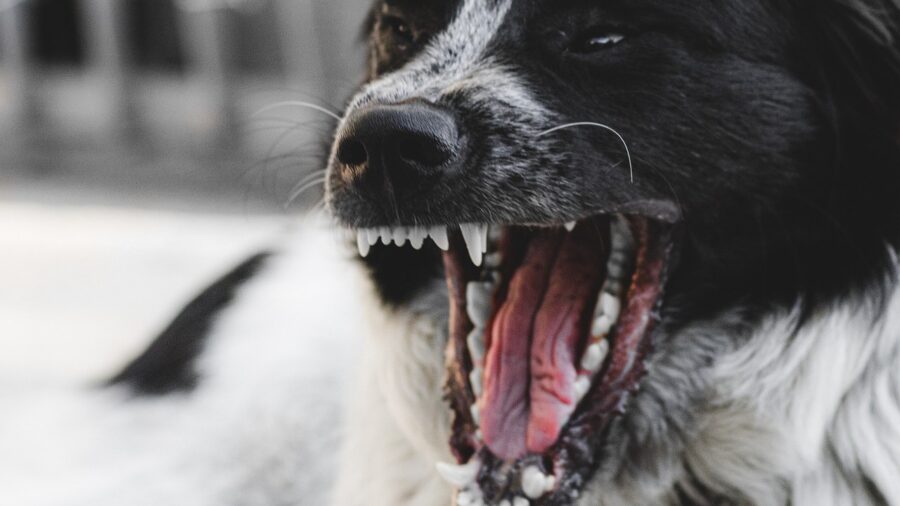Scientists Now Know When You Are More Likely To Get Bit By A Dog
Researchers say that the hotter it is outside, the more likely a dog is to bite.

Scientists have revealed that dogs are more likely to bite people on hot days or when the air quality is poor. According to the study conducted by researchers at Harvard Medical School, instances of dog attacks increase by up to 11 percent in these conditions. The discovery aligns with previous findings, which state that humans commit more violent crimes when temperature and air pollution are higher.
“We conclude that dogs, or the interactions between humans and dogs, are more hostile on hot, sunny, and smoggy days, indicating that the societal burden of extreme heat and air pollution also includes the costs of animal aggression,” researchers wrote about dog bites in the Journal Nature. To reach their finding, the Harvard team used data from eight cities in the United States.
According to The Byte, scientists examined over 70,000 documented cases of dog bites from 2009 to 2019. However, pandemic-related data was intentionally excluded. They then compared instances of dog bites with the available weather data. Along with the 11% average increase, there was a 4 perent rise in such attacks on warmer days and a 3% increase on days when air pollution was more prevalent.
Interestingly, dog bites were found to be 1% less likely on rainy days. However, the study did have limitations, as the weather does not account for all instances of aggression. As noted in the research, records did not provide information about the breed, gender, or spaying status of the dogs. Details about the bite victims, like familiarity with the dog and interactions preceding the each incident, were also absent.

Dog bites can result in severe injuries and emotional distress for both the victims and the canine. To prevent such incidents, it is crucial to understand all the factors that contribute to animal aggression. One of the primary reasons for dog bites is fear. When a dog feels threatened, cornered, or scared, it may resort to biting as a means of self-defense.
Approaching a dog too quickly, invading its personal space, or displaying aggressive body language can trigger fear-based responses. Dogs have a natural instinct to protect themselves, their territory, family members, or possessions. If dogs perceive a threat to their safety or resources, such as food or toys, they may bite to ward off the perceived danger.
Dogs in pain or discomfort may exhibit aggressive behavior, including bites, as a defensive mechanism. It serves as a means to prevent further pain or communicate their distress. Additionally, insufficient socialization during a dog’s critical developmental stages can lead to fear or anxiety around people or other animals.
Dogs that have not been exposed to various environments, stimuli, and social situations may respond aggressively due to fear or uncertainty. Since dogs communicate through body language cues, understanding these signals is crucial. Ignoring or misinterpreting warning signs, such as growling, bared teeth, or a stiff posture, can prompt a dog to bite.
Prevention plays a vital role in reducing the incidence of dog bites. Responsible owners should provide proper socialization, training, and regular veterinary care for dogs which prevents aggression. Moreover, raising awareness about dog behavior and appropriate interactions can help individuals understand warning signs and promote respectful encounters with dogs. When properly cared for, dogs really are man’s best friend.












